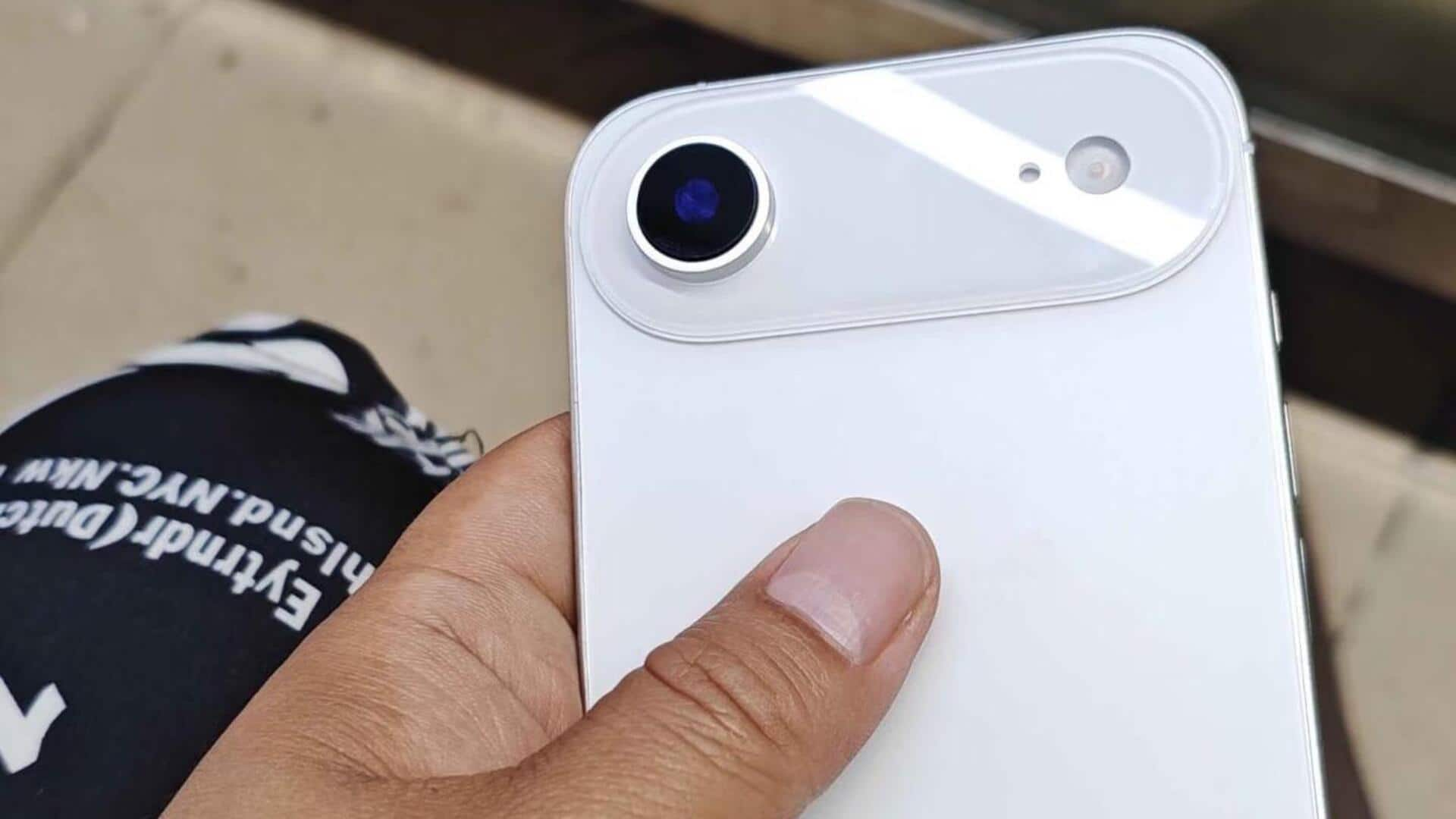
This is how the iPhone 17 Air will look like
What's the story
Apple is said to be gearing up for a major overhaul of its smartphone lineup, introducing a new "Air" variant to replace the existing 'Plus' model.
While earlier reports were based on concept renders and 3D-printed dummy units, the latest leaks give a more realistic idea of how the iPhone 17 Air could look.
The latest leak comes from tipster MajinBu, who posted an image titled "iPhone 17 Air."
Design details
Leaked images reveal iPhone 17 Air's design
The leaked image depicts a person holding what looks like a finished dummy unit of the iPhone 17 Air.
The metallic frame and two-toned glass on the rear shell are clearly visible in this representation.
Apple has been using this glossy-frosted pattern for a while, so it may stick with this design language for its highly anticipated ultra-slim phone.
Design concerns
Camera design and similarities with Pixel 9 series
The leaked image also reveals a horizontal camera island that seamlessly integrates with the rear glass shell, instead of protruding.
However, this aesthetic language appears overused and looks strikingly similar to the Google Pixel 9 series smartphones.
Without the extended camera island, the device would look eerily similar to the iPhone 16e model.
Twitter Post
Take a look at the back design
iPhone 17 Air pic.twitter.com/AktcCBm7PU
— Majin Bu (@MajinBuOfficial) April 27, 2025
Specs overview
Expected specifications and features
Leaks indicate that the iPhone 17 Air will come with a single 48MP rear camera and a next-gen 24MP selfie camera.
It will be powered by the A19 processor based on the three-nanometer node, coupled with 12GB of RAM.
The phone will have a sleek side profile of just 5.1mm and provide a large 6.7-inch OLED display with a refresh rate of up to 120Hz.
Connectivity
iPhone 17 Air's connectivity and thickness revealed
The iPhone 17 Air may ditch the physical SIM slot altogether and go with an eSIM for all markets.
Apple is said to be giving it an in-house modem, but it remains to be seen if it's a next-gen chip or the C1 modem that was used on the iPhone 16e.